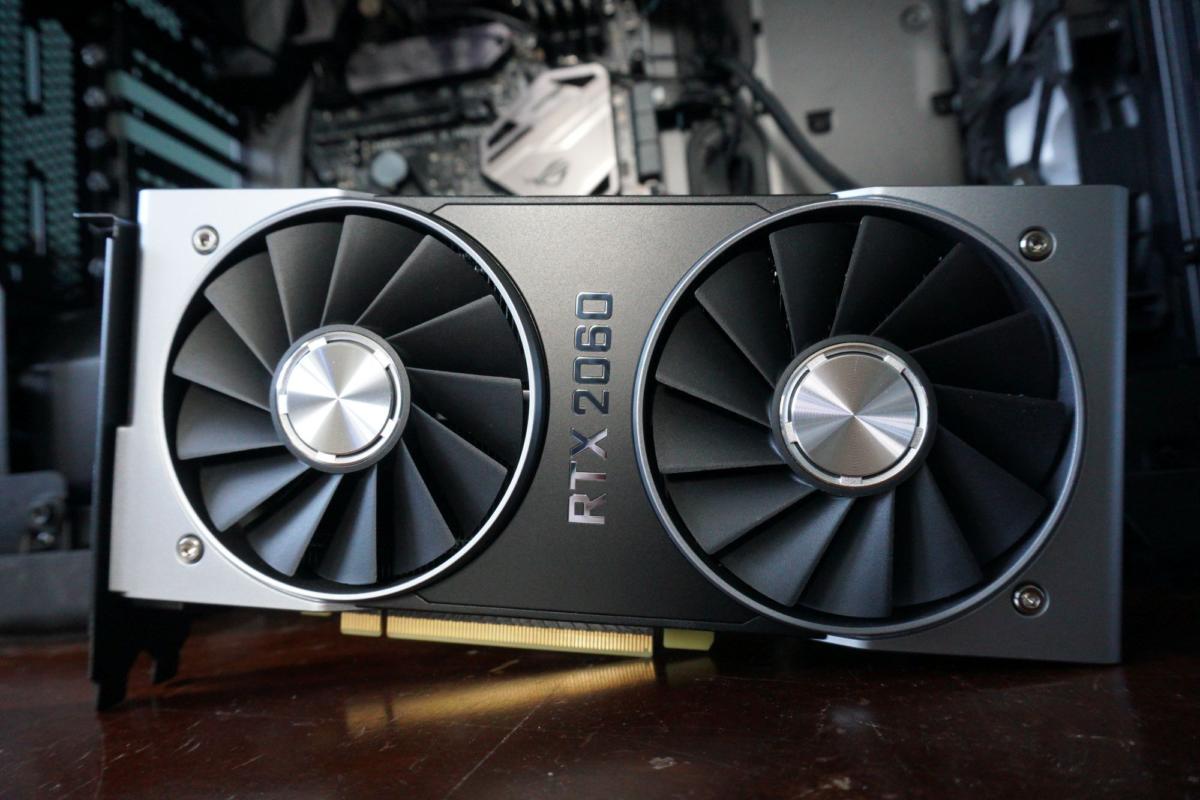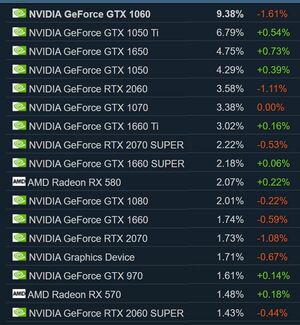We explain why it’s a smart move.
Brad Chacos/IDG
Today’s Best Tech Deals
Picked by PCWorld’s Editors
Top Deals On Great Products
Picked by Techconnect’s Editors
The rumors are true: Nvidia is supplementing the sky-high demand for GeForce RTX 30-series graphics cards by releasing stock of older GPUs to board partners, who can then use those to craft new hardware. It’s a smart solution for the frustrating graphics card market we’re currently mired in.
“There have been a lot of rumors recently about Nvidia releasing more GPUs to AIBs from older generations—the [GeForce] RTX 2060 and GTX 1050 Ti were specifically mentioned,” I asked an Nvidia spokesperson via email. “Can you comment on whether there’s any truth to that?”
“The products referenced below were never EOLed [end-of-lifed—ed]. So ‘reviving’ seems like the wrong terminology to use here,” Nvidia told me, referencing the use of the word “reviving” in my subject line. “More of an ebb and flow really. We’re just meeting market demand which remains extremely high as you noted.”
So there you have it. Yes, Nvidia is also supplying older GPUs to feed the insatiable demand for graphics cards. Again: It’s a smart move, as the GeForce RTX 2060 and GTX 1050 Ti sidestep some of the conditions creating such a volatile market.
Why reviving older GeForce GPUs makes sense
 Brad Chacos/IDG
Brad Chacos/IDGNvidia’s GeForce RTX 2060 Founders Edition.
The RTX 2060 debuted in January 2019 for $350. It supports Nvidia’s ray-tracing and DLSS ambitions but is built using an older 12nm TSMC manufacturing process, avoiding the hotly in-demand current nodes. (Nvidia’s RTX 30-series GPUs are built on Samsung 8nm, while shortages for AMD products and next-gen consoles stem from a logjam on TSMC’s 7nm node.) Ramping up production of this GPU puts more relatively current graphics cards with modern features on the streets, and creating hardware with firmly established manufacturing nodes tends to be much cheaper than building GPUs on a cutting-edge process.
 Valve
Valve A screenshot of the most popular graphics cards in the Steam Hardware Survey taken on February 11, 2021.
The GeForce GTX 1050 Ti, on the other hand, launched all the way back in 2016 for $140. Before you call it obsolete, consider that the humble GPU remains the second-most-popular graphics card on Steam (with the RTX 2060 at fifth), and deploying it again provides some key strategic advantages. Perhaps most important? It comes with 4GB of GDDR5 memory.
For months, rumors have said that there’s a shortage of the GDDR6 memory used with modern GPUs, and if that’s indeed the case, rolling out the GDDR5-equipped 1050 Ti again lets Nvidia build affordable hardware without tapping into its precious GDDR6 reserves. The capacity matters just as much. Part of the reason for the current GPU crunch is due to the Ethereum cryptocoin mining bubble, which is insanely profitable right now. Ethereum gets mined on graphics cards, unlike Bitcoin, but requires a GPU with more than 4GB of onboard memory. Bottom line: the reborn GTX 1050 Ti can’t be used to mine Ethereum so it won’t appeal to those buyers.
Better yet, as a 75W card that can slip into any computer’s PCIe slot without the need for extra power connectors, the GTX 1050 Ti is an easy and affordable upgrade for newfound PC gamers who took to the hobby while stuck at home for months. Just slap it in and start playing!
Not all that affordable
The extra stock for these older cards alleviates all different kinds of pressure for Nvidia and its partners, but the RTX 2060 and GTX 1050 Ti are still subject to today’s market pressures themselves. We can find a single GTX 1050 Ti for $190 on Newegg currently, but most are selling for $400 or more. Again, these cards debuted for $140 in 2016. Only a handful of RTX 2060 models are available on Newegg, starting at $800. Those prices all remain outrageous for what you’re getting as a PC gamer.
And despite Nvidia’s statement that these two GPUs were never formally sent out to pasture, make no mistake: The GTX 1050 Ti was in all but name, at the very least. It has since been replaced by the GTX 1650, and retailers told Tech Yes City (who broke the revival news) that “it feels like two years ago” since they last saw stock of the GTX 1050 Ti.
The rebirth of older graphics cards makes you wonder if we’ll see budget-minded next-gen cards anytime soon though. Nvidia is selling every high-margin RTX 30-series GPU it can manufacture right now, and if classic graphics cards are holding down the entry-level market to some degree at least, it makes business sense to focus on products that make you the most money. We’ll see how it goes. Stay tuned to the latest must-know news over at our roundup of the best graphics cards for PC gaming.
Note: When you purchase something after clicking links in our articles, we may earn a small commission. Read our affiliate link policy for more details.
Senior editor Brad Chacos covers gaming and graphics for PCWorld, and runs the morning news desk for PCWorld, Macworld, Greenbot, and TechHive. He tweets too.


